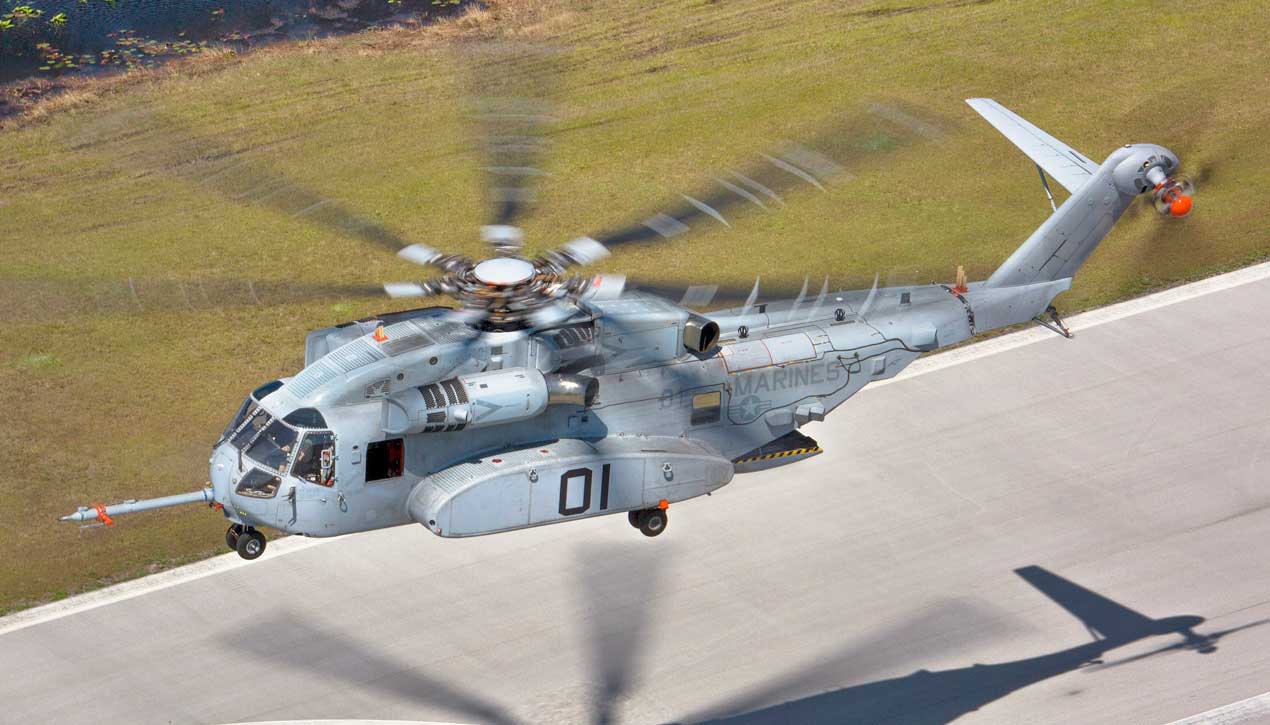Battle of the Rotors For German Heavy Lift Helicopter Programme
Sikorsky CH-53K helicopter put forward for German Bundeswehr heavy-lift transport programme.
17 January 2020

Sikorsky and Rheinmetall have submitted a bid with the German Bundeswehr for the production and operation of the Sikorsky CH-53K King Stallion as the new heavy-lift transport helicopter for the German Armed Forces.
Looking at lifecycle costs, mission requirements and capability, Sikorsky and Rheinmetall argue that the CH-53K will deliver better long-term value than its competitor, Boeing's CH-47 Chinook. Chinooks have served the armed forces of more than 19 international customers and performed in commercial service around the world.
Beth Parcella, Sikorsky International Business Development Director, said the CH-53K was the most efficient, capable and intelligent helicopter that will deliver the best long-term value to the German Armed Forces through the 21st century.
Sikorsky and Rheinmetall formed a STH project team of more than 10 German companies, which includes MTU Aero Engines, Autoflug and Hydro Systems. The team will benefit from a significant workshare and a high degree of technological co-operation and will offer Germany an excellent reliability in maintaining and using this platform.
Parcella stressed that it was important "to build a strong German industrial team early on and to capitalise on the know-how of the German teammates for the STH project." This will ensure the quality of the offer and subsequently the high availability of the CH-53K in the German Air Force, she said.
Mike Schmidt, managing director of Rheinmetall Aviation Services said German companies will play a significant role in the success of the CH-53K programme. In addition to the core team, other companies in the German defence industry would ultimately benefit from the procurement project. "Sikorsky and Rheinmetall prepared the application together over a long period of time - this has strengthened the bonds within our team. We have developed into a highly effective unit," Schmidt added.
Looking at lifecycle costs, mission requirements and capability, the CH-53K will deliver better long-term value. Its avionics and digitised flight control systems are designed to accommodate future software upgrades, and its internal payload capability may be increased substantially in the future with relatively simple modifications.
An integrated sensor system enables the aircraft to predict and prevent problems at an early stage and thus drastically reduce the maintenance effort, which is a key element for high availability rates of the fleet.
Additionally, the CH-53K is equipped with air-to-air refueling fully interoperable with Lockheed Martin's KC-130J tanker aircraft, which the Bundeswehr is planning to operate.
Due to the design of the cargo bay, the CH-53K easily accommodates the same air transport pallets, enabling fast cargo handling between it and fixed-wing transport aircrafts such as the C130-J and the A400M. This means that the helicopter can be used particularly in areas where bigger aircraft cannot land.
The CH-53K's versatility means it can be used for the tactical transport of personnel and material as well as for disaster relief, humanitarian missions, medical evacuation (medevac) or combat search and rescue (CSAR) operations.
For example, no other heavy-lift helicopter in the world can transport more water to fight fires and simultaneously carry material and personnel. The combination of high airspeed, a large water capacity and long mission endurance in operational areas allows the CH-53K to transport up to four times more water to fight fires.
The CH-53K can move personnel and equipment more quickly, safely and effectively than any other helicopter. meaning operators would not need as many aircraft to execute a mission. It will be safer and easier to operate, which will protect the pilots, the crew and the cargo.
The aircraft features fly-by-wire flight controls, reducing the pilots’ workload and allowing pilots to anticipate limits while keeping their eyes outside. This is a lifesaving capability in degraded conditions and allows precise control inputs when delivering an external load.
If the bid is successful, Sikorsky and Rheinmetall intend to set up a logistics hub and a STH fleet support center at Leipzig/Halle Airport. The companies are in advanced talks with representatives of the state government, local companies and the airport operator.